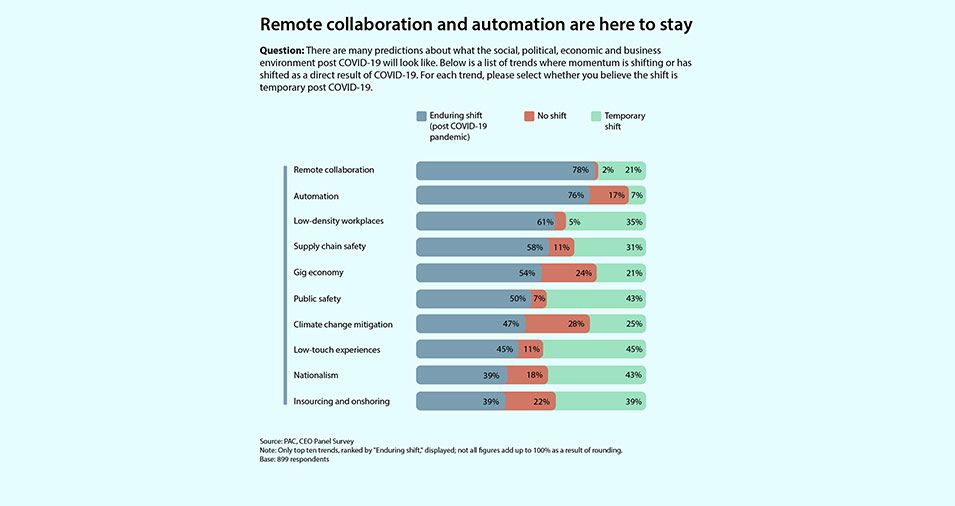The Symbiosis of Coworking Space & Technology: How it Has Made Work Fun & Productive

Summary – The win-win relationship between technology and the coworking space goes a long way. Sometimes all we need is a fresh perspective to see things hidden in plain sight.
Coworking began in a tiny one-room space in San Francisco by a software engineer named Brad Neuberg in 2005. There were many similar ideas in the air since 1995 when ‘hackspaces’ came to be in Berlin. However, it has been a minute since we’ve been in those old, good times of the late ‘90s or early 2000s. Today, as the circumstances call for a fast-evolving and flexible work-life, the future of workspaces needs to be ingrained with open, sustainable, and productive ideals that can be achieved with the current technological advancements.
As per CallisonRTKL, the pristine architects of prominent future-proof workspaces, residential areas, healthcare centers, etc. define Workplace 2.0 to be based on 3Ps:
People
The ability of workspaces to be sensitive towards the members’ psychological and functional needs. It defines the workspaces a human-centric dimension as well as ensuring their wellbeing as crucial for their performance.
Place
Unlike all stereotypes, Workplace 2.0 is based on the elements of flexibility and evolution in every aspect. Yet, with new challenges springing up harder than ever, the dependence on technology to develop resilient, mobile, collaborative services has never been more imminent.
Purpose
Community is the true goal of coworking 2.0 that can be genuinely attained when the members’ focus lies on the end target.
The PwC CEO Panel Survey shows how low-density workspaces can be a lasting change in most world regions. Such shifts can birth new opportunities to integrate flexibility, connectivity via tech-enabled, hybrid solutions. Some of such illustrations can be:

Credits: PwC
(The above graph represents the elements of coworking spaces that CEOs believe are here to stay – including low-density workplaces, public safety, automation)
Data monitoring
Because of the low density, the work environment may require effective data collection, gathering, and evaluation to understand work progress through intelligent technology. That way, the operators can also have clarity in data collection, understand the scope of improvement and help build awareness.
For a coworking operator, the following instances can be implemented:
- Installation of sensors across the shared space can help in determining if the area is accessible or not.
- Furthermore, the sensors can also carry out cleanliness and hygiene drills in a timely, organized way.
- The sensor data can also help operators see through the utility usage and further optimize HVAC factors based on occupancy.
We rely on Visitor Management Systems (VMS) to effectively maintain and organize all entries at Zioks. This way, our visitors can have seamless and prompt access to any members and schedule appointments beforehand.
Health and Wellbeing as an Amenity
One of the significant concerns of business owners has to be the increased vulnerability of its workforce while accessing a shared space. With more weight placed on thermal screenings, Workplace 2.0 needs intelligent health monitoring systems across checkpoints yielding correct readings and maintaining records for observation of an anomaly.
- The indoors of the workspace also needs to have clean, breathable air quality, pleasant temperature, and sufficient natural light exposure. Such elements can provide a healthy ambiance for members to be focused on their work.
- Having an around-the-clock visual display of such factors can keep your members feeling safe and cared for, attracting more numbers.
- Installation of apps that can notify members to take care of their seating posture breaks to walk around – preventing them from possible threats of backaches and strains.
Digital Workspaces
Breakthrough innovation requires engaging, collaborative, and immersive work experience. However, because of the need for social distancing in future offices, it’s inevitable to provide the virtual equivalent of such productive workspaces that can be accessed anytime. As a team, there’s nothing more important than ensuring that everyone stays on the same page and works together.
- Building 3D office twins of physical workspaces that celebrate the company culture and values.
- Providing an assortment of tools to interpret, present, and collaborate on real-time files without disruption.
- Flexibility to access such work hubs from practically anywhere, irrespective of geographical location. Made to align with the business interests and increasing geographical footprints of the growing, local IT industry, it can also be an innovative yet affordable way of setting up a business.
Industry-specific work ‘hubs’
Although reasonably new as a concept to the Indian coworking culture, unique work spaces are in pretty high demand – especially for their high-end, tech features, amenities, and a ‘wildcard entry’ to the affiliate network of industry giants.
British Land, a pioneer in property development and companies, envisions building campus environments where members can live, work, socialize, and shop as a mixed-use business. The blurring of the work and life has now fuelled the evolution of coworking that has:
- Superfast WiFi and excellent connectivity give startups, small companies leverage their requirements.
- Scalable solutions – right from the preferred style of your work to taking care of all the bits and bobs of work needs that can change over time.
As a niche coworking space in Kolkata delivering specialized coworking for the micro, small, and medium IT industry, we believe that coworking is soon becoming a lifestyle because of its heavy inspiration from flexibility. Not only can such environments provide work comfort, but it also paves the way for future sustainability.


